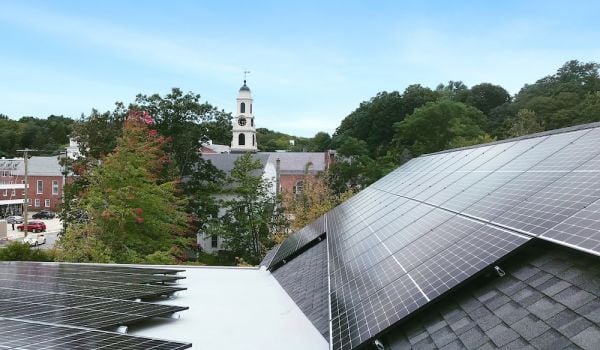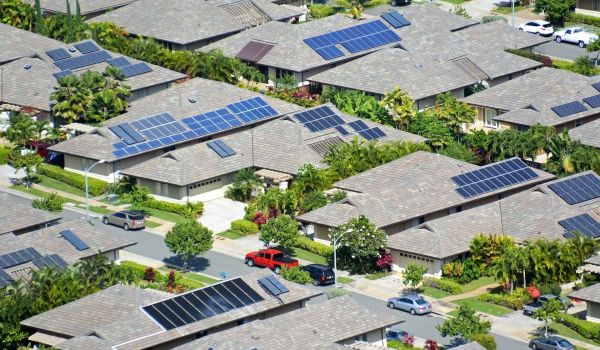Georgia may not get anywhere near as much electricity from the sun as some other states — according to data from the Interstate Renewable Energy Council, Georgia had 6.9 megawatts of installed solar capacity in 2011, compared to nearly 75 megawatts in much smaller Massachusetts — but its largest power company is looking to stay one step ahead of the game.
Seeking to avoid a solar meltdown in which customers end up not covering the fixed costs of grid infrastructure due to them feeding as much (or more) energy back into the grid as they receive, Georgia Power asked state regulators last week for permission to tack on around $22 in charges for customers who have installed solar panels. (Since private power companies are regulated public utilities, they have to run rate increases by state commissions.)
“As solar use spreads,” an Atlanta NPR affiliate reported, “the company stands to collect less revenue from those customers. What doesn’t change is the cost to maintain the grid. Georgia Power says non-solar customers shouldn’t have to bear all the costs.” While Georgia doesn’t have much solar power right now, its growth in this sector has been very fast — of the 6.9 megawatts of installed capacity in 2011, 5.1 were added that year.
Georgia Power’s request mirrors those of other utilities outside the state. Arizona Public Service Co. has asked its regulators to allow it to charge solar customers anywhere from $50 to $100, while California lawmakers recently passed a bill giving power companies the right to charge up to $10 in fixed fees for customers using photovoltaic panels. (California is the biggest generator of solar power in the country, with more than 1,500 megawatts of installed capacity in 2011, according to IREC. Arizona came in third place behind New Jersey, with nearly 400 megawatts.)
Solar advocates and environmentalists are, predictably, not pleased. “Georgia Power’s been using $22 as an average number, but we think that’s skewed,” said Seth Gunning of the Sierra Club’s Georgia chapter. “It’s not an accurate representation of what they want to impose.”
According to the Sierra Club’s own calculations, the charges that the company wants to add to solar consumers’ bills will likely add up between $40 and $150 a month — more in line with what Arizona Public Service Co. has asked for.
Gunning called any sort of fixed charges for solar consumers “an unfair obstruction and penalization of consumers who are trying to make personal investments.”
He went on: “It’s interesting that they’re making arguments that because of the widespread adoption of distributed generation” — that is, electricity that flows out of users’ homes rather than just in — “they are really worried that they’re not going to be able to recoup their assets on the schedule they’ve laid out. But at the same time they’re telling the commission that it’s going to be a big problem, they’re advocating that they add billions of dollars of new assets to that centralized energy model.”
Meanwhile, solar advocates won a significant battle against Georgia Power when the state’s utility regulator, the Georgia Public Service Commission, voted in July to force the company to include 525 megawatts of new solar capacity by 2016 — including some distributed power from consumers’ rooftop installations, but mostly coming in the form of large solar farms — on top of 260 megawatts already planned. Joining the Sierra Club to back the measure were, surprisingly, some members of Atlanta and Savannah Tea Party groups. (The “Green Tea Coalition,” they called the partnership.)
The commission will vote in December on whether to grant the rate increase.
The Works is made possible with the support of the Surdna Foundation.
Stephen J. Smith is a reporter based in New York. He has written about transportation, infrastructure and real estate for a variety of publications including New York Yimby, where he is currently an editor, Next City, City Lab and the New York Observer.

















